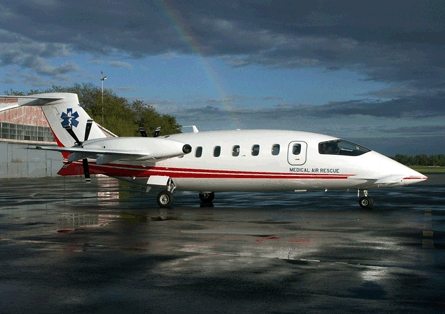Piaggio Aero will shortly open a new chapter in what has been a turbulent recent history with the launch of its first jet. The project - codenamed P1XX - has been in the works for several years, but the state of the market since 2008 has held the Genoa-based airframer back from releasing the stablemate to the iconic P180 Avanti II twin-pusher. However, Piaggio has said it hopes to make an announcement on risk-sharing partners and other suppliers - likely to include several fellow Italian companies - at next May's EBACE business aviation convention in Geneva, clearing the way for a formal launch.
 |
|---|
© PiaggioThe P180 fleet - comprising the original Avanti and the Avanti II from 2005 - marked in September 500,000 flight hours since the type's certification in 1990 |
The purchase of a third each of the business by two of the world's bluest-chip investors, Abu Dhabi state investment fund Mubadala (in 2005) and Indian conglomerate Tata (last year) - joining original shareholders, the De Mase and Ferrari families - has given Piaggio the funds and stablility it needs to develop the jet. However, the company has had a torrid year. It expects to deliver just 12 Avanti IIs in 2010, half last year's total, in what John Bingham, chief executive of its US arm, described at the recent NBAA show in Atlanta as a "horrible market". Even with its operating efficiencies over jet competitors, selling a stylish turboprop in a superlight segment that has been hammered in North America in particular has been a painful process.
However, Bingham says the company went into the downturn well prepared and adjusted output accordingly. It still has a backlog of 70 aircraft, 46 of which are earmarked for Avantair, the Florida-based all-Piaggio fractional that operates more than a quarter of the entire 203-strong Avanti fleet and with whom Bingham says Piaggio's relationship is "stronger than ever". The company has no whitetails - aircraft not assigned to a customer - and is actively pursuing new markets, both regionally and in terms of mission.
SPECIAL MISSION
The USA's first medevac P180 has just gone into service. Although a handful of Avantis fly as air ambulances in Europe and Asia, it is a relatively untapped area for Piaggio. The wider special mission market is also one for which Bingham has high hopes. In addition, Piaggio is applying for both Russian and Brazilian certification for the aircraft and hopes to begin sales in both countries and their neighbours early next year, backed by an extended service network. "We are so excited by South America," says Bingham. "It could be a game-changer for us. Brazil is a market that appears almost recession-proof and we are looking forward to 2011 and onwards."
Also insulating Piaggio from the business aviation downturn has been an engine component division in Finale Ligure near Genoa. It has a 25% stake in a joint venture with Pratt & Whitney Canada to manufacture parts for the PW200 series helicopter engine and provide final assembly for the European market. It is additionally a supplier to P&W on the F135 engine for the Lockheed Martin F-35 Joint Strike Fighter, as well as to Honeywell and Rolls-Royce.
 |
|---|
© PiaggioThe USA's first medevac P180 has recently entered service |
The family ties with Ferrari have also bolstered the Avanti image - Piaggio chairman Piero Ferrari is also vice-chairman of the performance car manufacturer and Mubadala is a shareholder in both companies. The Ferrari racing team uses an Avanti with the company's famous prancing horse symbol displayed on the tail.
It was in fact Piero Ferrari who, with fellow engineer Jose Di Mase, led a private consortium in 1998 to buy the assets of the original Piaggio aircraft business that had developed the P180 in the 1980s (the company's involvement in aerospace dated back to the First World War. Another arm of Piaggio created the Vespa, one of Italy's emblematic motor scooters). The P180 fleet - comprising the original Avanti and the Avanti II from 2005 - marked in September 500,000 flight hours since the type's certification in 1990.
Although the Avanti's somewhat quirky design will mean it will never have mass market appeal, the company believes efforts to improve North American service - the network has increased from five approved centres a year ago to 17 - are breaking down some of the barriers to choosing the twin-pusher. Piaggio's links to Mubadala and Tata should also open doors for the brand in two of the world's most promising emerging business aviation markets: the Middle East and India. Mubadala has hinted strongly that an assembly line in Abu Dhabi for the Piaggio jet could make it the region's first indigenous aircraft by the end of the decade.
Details on the new jet are sparse. Piaggio has promised that it will not simply be a P180 with jet engines, but an aircraft designed for an entirely different sector - with a larger cabin as well as longer legs. One thing is for sure; it will be easy on the eye. However, competing in a segment alongside around half a dozen direct competitors, Piaggio's challenge will be to make it gentle on the pocket too.
Source: Flight International



















